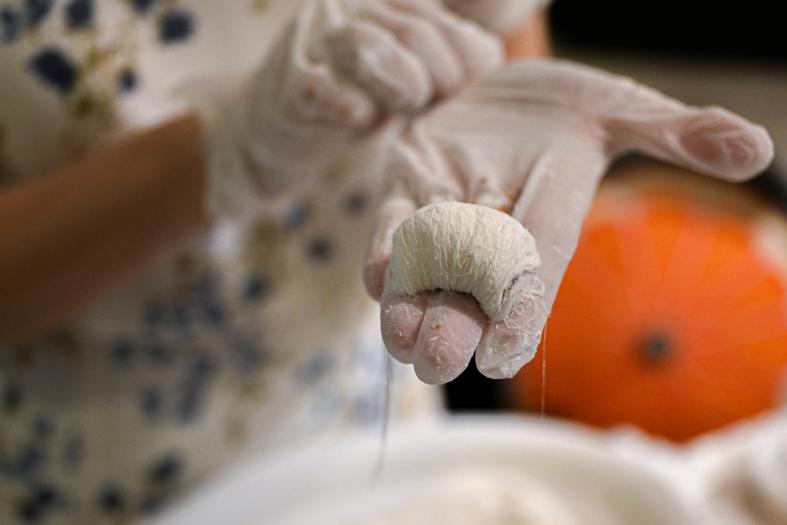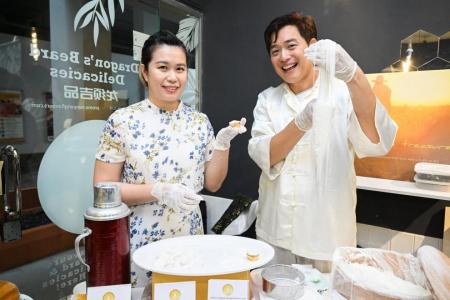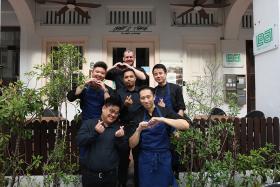Over 20 years and an 8-step process towards dragon's beard perfection
It has taken Roger Poon over two decades of training to become a “dragon’s beard master”.
Dragon's beard is a Chinese delicacy reminiscent of a dragon's beard due to its silky strands. It is crafted by expertly stretching and folding the mixture until it transforms into numerous fine threads.
Often coated with peanuts or sesame seeds, it offers a sweet, chewy texture, and is a rather unique treat.
Speaking to TNP, Mr Poon, 44, said he began learning how to wrap dragon's beards when he was just five years old from his Aunt Lili.
“Auntie Lili learnt how to make dragon’s beards from her grandfather in Singapore, I believe in the 70s, when her grandfather was still alive,” Mr Poon said.
Ms Lili Ho, who died in 2019 at the age of 72, was a key figure in making the Chinese delicacy available to Singapore during the late 1980s.
“Before 1988, Singaporeans could find dragon’s beard delicacy only during trade fairs (organised by) the tourism board, where the dragon’s beard master – usually from Hong Kong, China or Taiwan – would travel here to make them,” Mr Poon explained.
“That was until Auntie Lili began making it (for her) livelihood.”

Thankfully for fans of the sweet treat, Ms Ho passed on her invaluable skills to Mr Poon and his sister Elaine.
While in his 20s, Mr Poon worked part-time alongside his aunt for several years, mostly with wrapping the dragon’s beards – the final step in a lengthy preparation process – after she had prepared and cooked the ingredients.
It was only in 2010 when he began to make the delicacy on his own, from scratch. He would purchase the malt and rice flour needed, prep and cook it, before “stretching” the threads.
The dragon's beard-making process isn't a walk in the park, Mr Poon said. It involves a meticulously choreographed eight-step dance, with an auspicious reason behind each step.
The first two steps involve warming the malt and shaping it into an “ancient coin”.
Then, it is placed in a pot of rice flour as it continues to be shaped in a circle.
“Step four is shaping the malt into the number eight, which many Chinese like,” Mr Poon said.
“Next, make the shape of infinity” – meaning infinity of health and wealth.
“Step six is to wait for the “arrival of the dragon” as we pull the dragon’s beard. We must not use too much strength (so) the malt doesn’t break. Once they break, it's not auspicious.”
The seventh step is to transfer the malt from the pot to the plate. And the final step: Adding an ingredient that represents gold.
“Step eight means wrapping gold with the dragon’s beard.”
@tnpdigital Sugar, sweetness and everything nice with a dragon's touch! ? Indulge in the magic of dragon's beard candy. ?? #fyp #sgnews #sgfoodie #sgeats #dragonsbeardcandy ♬ original sound - TNP
Mr Poon said achieving the "arrival of the dragon" can be the most demanding step, as the threads must be exceptionally fine.
“The first time I made it, I over-pulled it until they became fine threads, (which) stuck to one another and became a sticky malt mess."
For those who want to experience the magic of dragon's beard, visit https://dragonbeardcandy.com.sg/.
Get The New Paper on your phone with the free TNP app. Download from the Apple App Store or Google Play Store now



